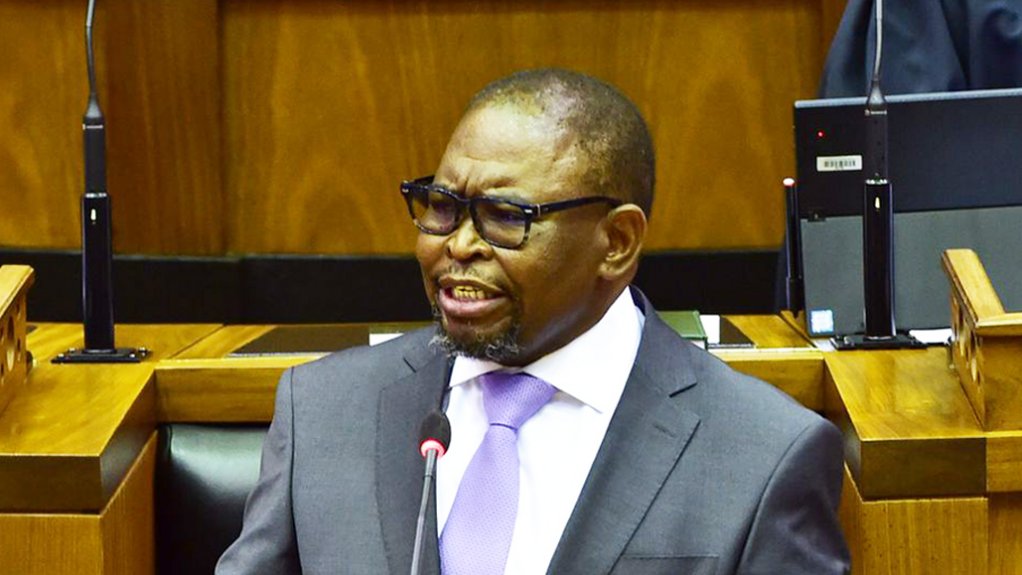Finance Minister Enoch Godongwana unveiled a far-reaching reform in relation to government’s treatment of the Gold and Foreign Exchange Contingency Reserve Account (GFECRA), which will result in R150-billion in drawdowns from the account over the coming three years to reduce government borrowings.
The settlements will be in three tranches, including R100-billion in 2024/25 and R25-billion apiece in the subsequent two financial years, and the proceeds will help reduce government’s gross borrowing requirement from R553.1-billion in 2023/24 to R428.5-billion in 2026/27.
The distributions will also reduce debt-service costs by R30.2-billion over the coming three years, when compared with the estimate outlined in the 2023 Medium Term Budget Policy Statement (MTBPS).
GFECRA is an account held at the South African Reserve Bank (SARB) and captures losses and profits on foreign currency reserve transactions and protects the bank from currency volatility.
Several economists have been urging the National Treasury to consider using the account to avert a debt crisis, given a surge in borrowings in recent years amid an increasingly distressed tax base, and persistently low growth. The National Treasury revised South Africa’s 2023 growth down to 0.6% and forecast growth of only 1.3% for the current year.
Research and consultation regarding the GFECRA have been under way for a number of months, but it was not clear ahead of the Budget whether these had progressed to a point where the account could be employed to support the national finances.
When the rand depreciates, as it has done consistently since about 2011, the balance in the account improves, with balances in favour of the SARB having surged from R28-billion in 2023 to R507.3-billion in January 2024.
Under a proposed settlement agreement, which was being formalised between the National Treasury and the SARB, a portion of the valuation gains will be drawn down over the coming three years to reduce borrowings.
Godongwana also tabled legislation along with his Budget documents outlining an amendment to the Gold and Foreign Exchange Contingency Reserve Account Defrayal Act, 2003, to give effect to the drawdowns.
To make the R150-billion available to the National Revenue Fund, R250-billion of the GFECRA funds will be employed, with R100-billion to be directed towards the SARB to cover interest-rate sterilisation costs that will arise as a result of increased liquidity.
SARB governor Lesetja Kganyago described it as a complex arrangement that had arisen following intense conversations between the central bank and the National Treasury, and stressed that it was not cost-free, as could be seen by the R100-billion set aside for the SARB over the medium term.
The proposed settlement agreement between the National Treasury and the SARB, meanwhile, would also establish a new framework for the treatment of the GFECRA, which the National Treasury insisted would continue to protect the bank and was in line with “peer norms”.
The Budget Review indicates that framework will allocate valuation gains across three “buckets”, with the first bucket retaining sufficient funds to absorb exchange rate swings.
“Once this arrangement has been fulfilled, funds will be distributed to the second bucket, a Reserve Bank contingency reserve, to ensure the central bank’s solvency and to pay sterilisation costs to neutralise the interest-rate impact.
“Once the first two obligations have been settled, funds will be distributed to the National Treasury,” the Budget Review states.
NEW FRAMEWORK
The reform is guided by principles developed in consultation between the National Treasury, the SARB and international experts, including that any GFECRA distributions be governed by a clear and transparent framework that prevents ad hoc drawdowns, as well as that the proceeds be used to reduce borrowings.
In addition, the SARB’s solvency should not be undermined by any GFECRA distribution, implying that the central bank should not suffer sustained negative equity.
There should also be no sales of foreign exchange reserves to realise GFECRA gains if such reserves are below estimated adequacy levels, and there should be no distribution of unrealised GFECRA balances that could plausibly be unwound by future rand appreciation.
Godongwana announced that government’s gross loan debt was now projected to stabilise at 75.3% of gross domestic product (GDP) in 2025/26, slightly lower than the level of 77.7% projected in the MTBPS.
Debt-service costs will stabilise at 21.3% of revenue in 2025/26 and decline thereafter.
The consolidated budget deficit is projected to narrow from 4.9% of GDP in 2023/24 to 3.3% by the end of the 2026/27 financial year.
Despite the pressure release provided by the new approach to the GFECRA, as well as the looming May 29 election, which is set to be the most competitive of the democratic era, Godongwana implemented the tax increases signalled in the MTBPS.
These totalled R15-billion for 2024/25 and arose primarily from the ‘bracket creep’ flowing from there being no Inflation adjustments to the personal income tax tables and medical tax credits. Increases in excise duties on alcohol of between 6.7% and 7.2% and a rise in duties on tobacco of between 4.7% and 8.2%, were also announced.
Godongwana said the R2.37-trillion Budget confirmed that government was “staying the course” on the fiscal strategy outlined in the 2023 MTBPS, including on the goal of achieving a primary budget surplus by the end of March, meaning that revenue would exceed non-interest expenditure.
EMAIL THIS ARTICLE SAVE THIS ARTICLE ARTICLE ENQUIRY
To subscribe email subscriptions@creamermedia.co.za or click here
To advertise email advertising@creamermedia.co.za or click here











